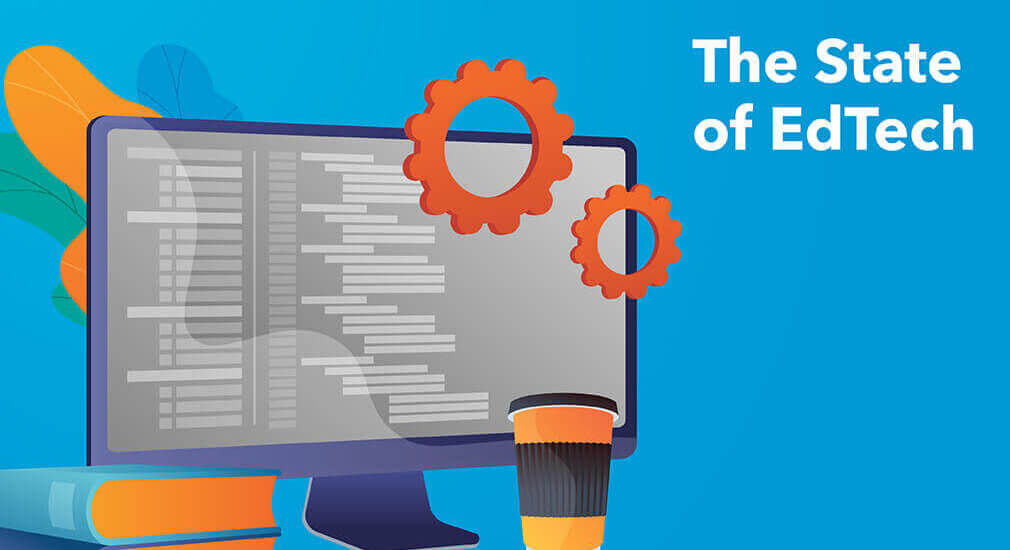If there’s one thing everyone learned—or should have learned—from the COVID-19 pandemic, it’s that having a strategic plan to address unforeseen crises is essential. While no one can anticipate every type of situation that may arise, we all can prepare for both natural and manmade disasters in general. Whether it’s a government, a business, a hospital, or a school, institutions should have a plan in place to avoid massive disruptions and continue to meet the needs of customers, constituents, clients, and students.
For the most part, the education system was unprepared to deal with COVID-19, as were most other sectors of society. But not only were schools and districts caught without a pandemic plan, they also lacked a strategy for using technology in general. Of the 1,200 American teachers and educators surveyed in Promethean’s 2020 State of Technology in Education report, only 34% had a formal plan for technology use in their school.
Before the pandemic, this might not have seemed like a big deal. Oftentimes, education technology is seen more like a nice-to-have than a must-have. But now that schools are grappling with the requirement of offering either remote or hybrid learning to students, technology has emerged as absolutely critical to delivering education.
There’s never a bad time to plan
When you’re in the midst of a crisis, sitting down and making a plan seems counterintuitive. You’ve got students, parents, and teachers clamoring for direction, answers, and equipment, so your likely response is to just deal with those pressing needs right away and worry about that elusive “plan” when things calm down. But this can be dangerous. Dealing with the problem of not having a plan by continuing to avoid creating one is not a good strategy. It leads to throwing money and resources at issues without thinking things through, and it will likely result in creating even more problems down the road.
The pandemic has presented a whole host of competing, yet interrelated challenges that need to be addressed simultaneously. For example, many students do not have the laptops or tablets needed to learn remotely, so schools must find ways to provide this equipment to all students. However, there’s also the problem of lack of connectivity, which must be addressed in order to make those devices usable. Even more challenging is the fact that many students will choose not to participate at all in remote learning for a variety of reasons, such as lack of motivation or because they must take care of a younger sibling while their parents work. Addressing these less obvious hurdles is just as critical as getting technology and internet access to students in need.
Four key principles provide a roadmap to success
While the prospect of figuring all this out and creating a strategic plan might sound incredibly daunting, it doesn’t have to be. As Cheryl Miller, Chief Marketing Officer of Promethean, explained in an article for EdSurge, “There are plenty of school districts whose implementation success stories provide useful guidance for finding new technology solutions to improve instruction.” Miller goes on to present four key principles that successful schools have used to maximize their potential and achieve their goals.
- Prioritize early evaluation: With so many different types of technology to choose from and so many different brands and manufacturers, choosing the best ones for your school can seem impossible. Miller suggests gathering a variety of stakeholders, including teachers, administrators, IT staff, and support staff, to figure out what’s essential and evaluate the options—ideally with some hands-on testing.
- Create a plan and stick to it: Districts don’t have to reinvent the wheel when it comes to edtech strategic planning. Instead, they can look to similar districts and learn from their experiences. Ideally, they will take the best from those successful plans and create their own five-year strategy that includes milestones and benchmarks, such as when to update hardware and infrastructure and how to enable access to high-quality digital content and curriculum resources.
- Commit to professional development: You can buy the most cutting-edge technology out there, but if your teachers don’t know how to use it, it’s worthless. In order to make sure teachers are both comfortable and proficient with the new technology, districts and schools must provide initial and ongoing training and support. Promethean, for example, offers a variety of in-person and online courses and workshops, as well as on-demand support and troubleshooting whenever needed.
- Measure success continuously: The only way to know if your edtech solutions are working is to monitor and measure your success. This can be done in a variety of ways, from surveying teachers and students and asking for testimonials to quantifying engagement and interaction to reporting on student achievement. If your measurements don’t live up to your expectations, a change, of course, will be needed.
The most important thing for schools and districts to remember is they’re not alone in this process. They can look to their peers for inspiration and advice, and they can get dedicated support from the technology companies they choose to work with. Realizing that this is a collaborative, team effort will go a long way toward ensuring success.
To read more insights and best practices from Promethean, continue to visit our Resource Center week to week.


